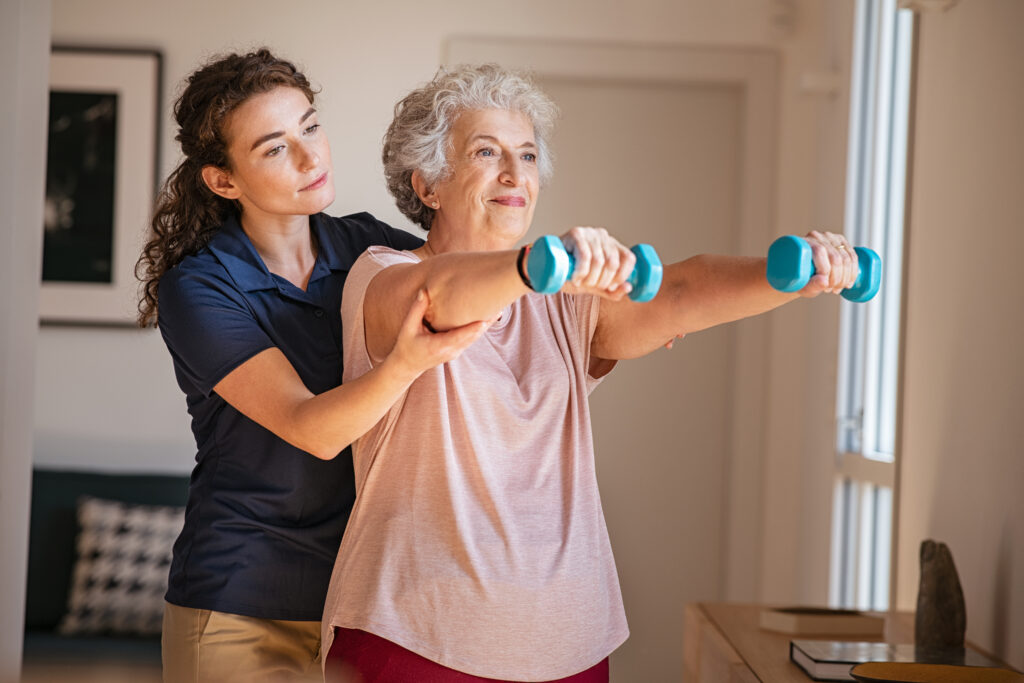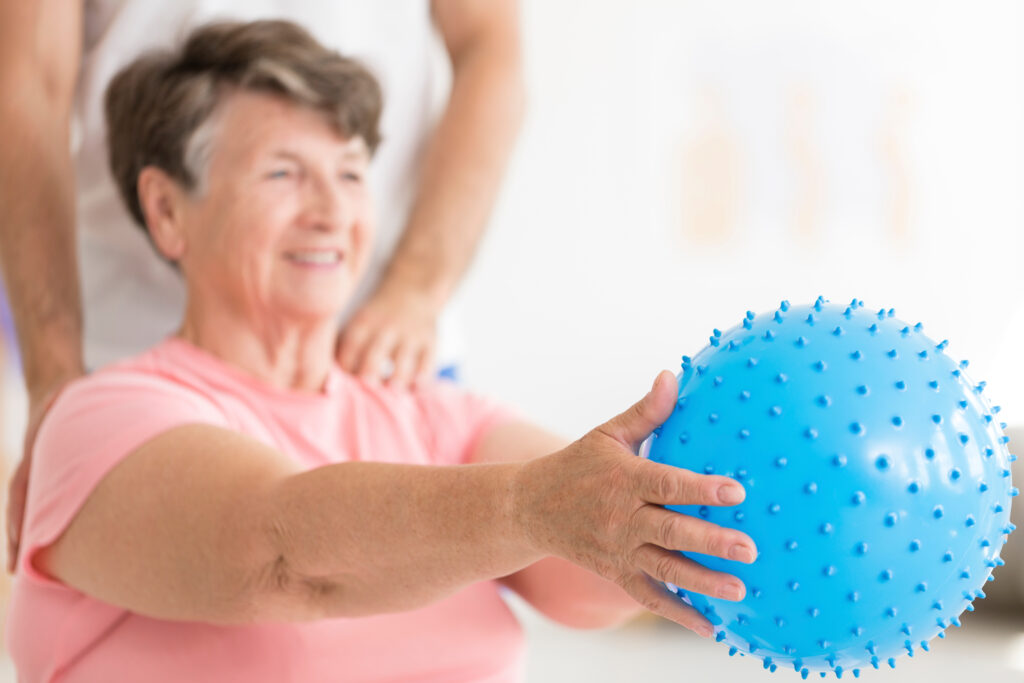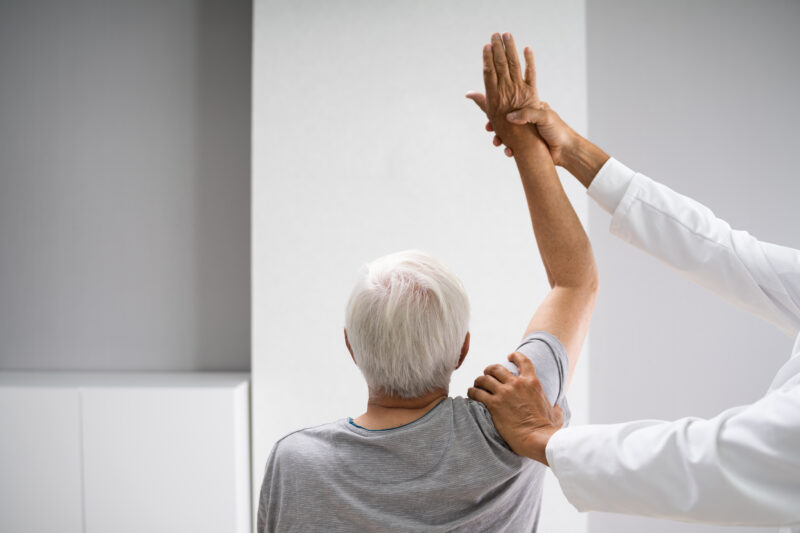According to the CDC, physical activity is essential for healthy aging. They recommend that adults over age 65 should move their bodies for at least 30 minutes each day in order to avoid serious conditions like heart disease, stroke, diabetes, high blood pressure and obesity. But as seniors age, they’re more susceptible to arthritis and other physically debilitating conditions, causing them to stay sedentary more for fear of experiencing pain.
Anne Joergens, a physical therapist who works in various Southern Illinois nursing homes and assisted living facilities, says regular movement is a must in order for seniors to live a healthy life.
“It’s absolutely necessary for older adults to move their bodies,” she said. “Laying in bed watching TV or sitting in a recliner all day not only decreases blood flow – which is bad for the heart – but also decreases strength and flexibility. That just makes them weaker and more likely to fall off balance – leading to dangerous falls.”
Joergens saw a major decline in patients during COVID-19 lockdowns when those who would normally have been walking the halls or participating in balloon tennis were stuck alone in their rooms. Muscle strength deteriorated and organs began to fail, making it harder for patients to fight the coronavirus. Now that they’re allowed back in community rooms and doing activities like chair exercises, there’s a major improvement in residents’ overall health.
As a physical therapist, Joergens’ job is to help seniors stay mobile. Sometimes they’re recovering from injuries and need to become stronger in order to walk. Sometimes they’ve had a stroke and need to re-train the body and brain to work together. And sometimes they need pain relief in order to move again.

Why physical therapy is so important for older adults
The elderly can benefit from regular physical therapy sessions whether they live at home, in a long-term care facility or in a rehabilitation center. Joergens says family members should seek treatment for their loved ones in order to:
- Reduce the risk of a fall: Since balance problems are so common, seniors are likely to fall and fracture bones. Physical therapists help patients practice bending, reaching and standing on different surfaces so they can remain stable when they need to do these things on their own.
- Recover from injuries: After experiencing falls or other injuries, the elderly are often apprehensive to use those limbs again. Physical therapists work to get patients’ strength back after injuries so they can be fully mobile again.
- Decrease pain: Chronic conditions like arthritis and osteoporosis can be debilitating, but physical therapists can offer exercises that lubricate joints to help alleviate that discomfort.
- Lessen the need for drug dependency: The pain from chronic conditions often leads to relying on pain medications just to get through the day. Regular physical therapy can soothe muscles and joints, offering natural pain relief.
- Allow for prolonged enjoyment of physical activities: Older adults who love to do hobbies like gardening, fishing and walking the dog tend to lose interest in those activities as they become uncomfortable. The mobility and pain relief that physical therapists provide lets seniors get back to doing the things they love.
What happens during physical therapy sessions?
After carefully assessing how much movement a patient can tolerate, a therapist usually spends 30-60 minutes at least three times per week performing a combination of the following:
- Cold therapy to reduce inflammation and swelling
- Heat therapy and/or massage to improve circulation
- Stretches to reduce joint stress and increase mobility
- Light weightlifting to build strength and increase bone density, which facilitates stability
- Balance exercises to help with coordination
- Walking (assisted or unassisted) to build leg strength and balance

Maintaining lasting results
After weeks of physical therapy sessions, seniors can begin to enjoy a more active and pain-free life. But the main concern with older adults is that there will be a noticeable deterioration if they don’t continue to move. Joergens stated that since insurance companies will only cover physical therapy for a limited amount of time, it’s important for family members to help loved ones to continue exercising after sessions have ended.
“All the progress we make can go away quickly,” said Joergens. “Try to help them continue those exercises, or encourage them over the phone to keep moving. It will really make a difference in their quality of life.”

